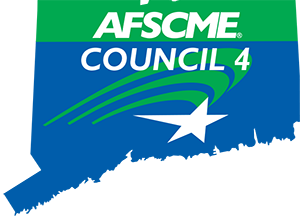Friday, October 1, 2021--HARTFORD -- State employees currently providing essential services at unprecedented short-staffing levels are requesting a 20-day extension on Governor Ned Lamont’s vaccination mandate that allows for a temporary process of testing in lieu of vaccination at some workplaces.
With a compliance deadline of Monday, Oct. 4th at 11:59 PM and zero confidence in Governor Lamont’s administration to collect and present accurate numbers on noncompliance by that time, a strict implementation of the executive order could trigger extremely harmful consequences for workers and the people of Connecticut depending on the services they provide.
“As a nurse, I care deeply about the well-being of our patients. We are appalled at Governor Lamont’s failure to take responsibility for staffing shortages accelerated by his administration’s failure to fill critical vacancies,” said Damien Nuzzo, nurse clinical instructor at Connecticut Valley Hospital. “Governor Lamont wants to send replacement workers as substitutes for long-term caregivers who have years of rapport with these clients. This is a blatant abuse of power. That simply won’t work and will place both caregivers and patients in danger,” said Nuzzo, a member of District 1199 New England, SEIU.
On Sept. 22, the State Employees Bargaining Agent Coalition (SEBAC) issued a request for a flexible period for compliance after the deadline to “allow the parties to cooperatively assess the levels of understaffing and displacement caused by the mandate and make the best informed decisions about how to cope in a way that protects patients/clients and the workers who care for them.” While the deadline for strict compliance with vaccination was extended from Sept. 27 to Oct. 4, the state employees represented by unions in SEBAC have not experienced such cooperation from Governor Lamont’s administration.
To make matters worse, thousands of union members, including workers at the Department of Mental Health and Addiction Services, were not informed until Monday, September 20 that their worksites were included in the updated language of Executive Order 13G.
“Chronic understaffing was already putting patient and caregiver safety at risk long before the pandemic hit,” said Jill Alsgaard, RN, an Intensive Care Unit (ICU) nurse at UConn Health’s John Dempsey Hospital. “Coupled with the expectation of a ‘retirement cliff’ next year, an even larger exodus is coming. The strain of the past 18 months has only made a bad situation worse and, sadly, provided administration an excuse for inaction. I’m about to take on another shift after working 12 hours overnight. I’m willing to do it for my patients and my colleagues, but it’s hardly a sustainable solution,” added Alsgaard, a member of the University Health Professionals (UHP), AFT Local 3837.
Many workers like Robert Doty, a maintainer from the Department of Transportation, were placed on the non-compliance list despite endless attempts to demonstrate compliance with the governor’s Executive Order by filing the appropriate paperwork.
“This mandate has created unnecessary stress, I’ve tried to do everything in my power to comply. But I could be put out on leave on Tuesday. This arbitrary deadline from Governor Lamont has created extreme anxiety and confusion across all agencies, for employees who came to work every day during the pandemic,” added Doty, a member of the Connecticut Employees Union Independent, SEIU Local 511.
“Long before the global COVID pandemic, our members and other state employees were telling elected officials, the press, and the public that short staffing in state agencies is a wasteful risk to the health and economy of our State and its residents. It should not have taken a deadly virus for Governor Lamont to recognize that. Unfortunately, his plan is not a sensible response to the challenges we still face,” said CSEA President Steve Anderson, environmental analyst in the Department of Agriculture. “I’m fully vaxxed and submitted my information months ago. But the State keeps telling me I am not in compliance. The Governor plans to disrupt services and put soldiers to work in state worksites when the real problem is short staffing combined with a poorly executed compliance system.”
Amanda Tower, a state correction officer and steward for AFSCME Local 391, noted that Connecticut’s prisons are dangerously understaffed, currently facing a shortfall of 400 front-liners with an additional 400 expected to retire in 2022.
“Correction staff have worked through the pandemic at great risk to ourselves and our loved ones,” said Tower, who works at MacDougall-Walker Correctional Institution in Suffield. “We’re being forced to work 16 hours a day, multiple times a week, with no support and no relief in sight. This is not sustainable. Frontline correctional staff are complying with the governor’s executive order. We are getting tested regularly or getting vaccinated. I am among the many who are vaccinated. The conversation should be about DOC’s staffing problems that began long before the vaccine mandate. We need the Lamont administration to hire more frontline staff across all the agencies experiencing difficulty meeting the demand for services due to inadequate staffing.”
SEBAC does not expect to issue any further public comments on this matter until Monday, October 4 at the soonest.
The State Employees Bargaining Agent Coalition (SEBAC) comprises all 15 unions representing approximately 40,000 Connecticut public service workers. Together they collectively address issues important to its members and the people they serve.
Press Contact:
Logan Place, SEBAC Co-Coordinator, (310) 490-9529, lplace@aftct.org
